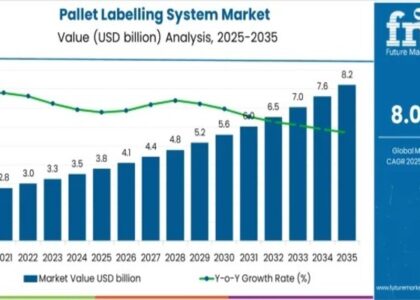The flexible battery market is one of the most promising and dynamic sectors in the world of energy storage today. While the mainstream focus tends to center around the use of flexible batteries in wearable devices and electric vehicles, there are several emerging trends and innovations that could redefine the entire landscape. This article explores some of the lesser-discussed but highly impactful developments in the flexible battery industry. From solid-state technologies to biodegradable alternatives, flexible batteries are evolving in ways that promise to transform a range of industries, from healthcare to Internet of Things (IoT) applications. By exploring these emerging trends, we will uncover how the future of energy storage is being reshaped by creativity, sustainability, and cutting-edge technology.
The Rise of Solid-State Flexible Batteries
Solid-state technology is one of the most promising areas of development for flexible batteries. Traditionally, flexible batteries have relied on liquid electrolytes to conduct energy, which poses certain safety risks such as leakage and degradation over time. In contrast, solid-state batteries replace the liquid electrolyte with a solid material, providing increased safety, longer life cycles, and higher energy density. These attributes are particularly crucial for applications where battery reliability and longevity are paramount, such as medical devices and aerospace technology.
Request Your Sample and Stay Ahead with Our Insightful Report!
Solid-state flexible batteries offer a unique combination of flexibility and robustness, allowing manufacturers to design more efficient, lightweight, and durable power solutions. For example, in the medical field, these batteries could be used in implantable devices, where safety and long-term functionality are critical. The combination of flexible substrates and solid-state technology addresses many of the limitations of traditional flexible batteries, such as their vulnerability to puncture or leakage.
While solid-state flexible batteries are still in the development phase, their potential is significant. Research is ongoing into the use of materials such as lithium sulfide and ceramic as solid electrolytes, which could further enhance battery performance. As production techniques evolve, we are likely to see solid-state flexible batteries become more commercially viable and widely adopted in various industries.
Biodegradable Flexible Batteries: The Future of Sustainable Energy Storage
Sustainability has become a key concern in all technological sectors, and energy storage is no exception. The environmental impact of traditional batteries, particularly those made from toxic or hard-to-recycle materials, is a growing concern. Biodegradable flexible batteries represent a groundbreaking solution to this problem, offering an eco-friendly alternative that could significantly reduce the environmental footprint of energy storage devices.
Researchers are now exploring the use of organic materials, such as plant-based polymers and cellulose, to create flexible batteries that naturally degrade over time. This innovation is particularly important in industries such as consumer electronics and medical devices, where batteries are often discarded after use. By incorporating biodegradable materials into flexible batteries, manufacturers can reduce electronic waste and contribute to a more sustainable future.
For instance, a group of researchers recently developed a biodegradable battery using silk protein and a natural polymer called chitosan. These materials not only offer flexibility but also degrade harmlessly in the environment, making them an ideal choice for applications in wearable devices and short-term medical implants. As this technology progresses, biodegradable flexible batteries could become a mainstream option, providing a green alternative to traditional energy storage solutions.
Role of Flexible Batteries in the Internet of Things (IoT) Revolution
One of the most promising applications of flexible batteries is in the Internet of Things (IoT) sector. As IoT devices become smaller and more integrated into daily life, there is a growing need for energy storage solutions that are compact, flexible, and capable of powering devices for extended periods. Flexible batteries are particularly well-suited for these purposes because of their ability to be integrated into various shapes and sizes, while also offering the necessary power output.
For example, smart clothing and wearable health monitors are two IoT applications where flexible batteries play a vital role. These devices require lightweight, thin, and highly flexible power sources to maintain comfort and portability. Flexible batteries can seamlessly integrate into these devices, providing long-lasting power without adding bulk or rigidity. Moreover, the flexibility of the battery allows it to bend and stretch along with the fabric, making it ideal for dynamic applications where traditional batteries would fail.
Beyond wearables, flexible batteries also hold significant promise in powering the growing number of connected devices in smart homes and cities. From sensors that monitor air quality to smart grids that manage energy distribution, flexible batteries provide a versatile and efficient power source that can enable the seamless operation of a wide range of IoT applications.
The Intersection of Flexible Batteries and Energy Harvesting Technologies
The convergence of flexible batteries with energy harvesting technologies is an exciting frontier that could lead to self-sustaining devices capable of operating without the need for traditional charging infrastructure. Energy harvesting technologies capture ambient energy from sources such as solar, thermal, or kinetic energy and convert it into usable power. When integrated with flexible batteries, these technologies can create energy systems that are both highly efficient and entirely independent of external power sources.
For example, research is underway into the use of flexible solar cells combined with flexible batteries, creating self-charging devices that can function continuously without the need for plug-in recharging. Additionally, wearable devices equipped with kinetic energy harvesters can convert motion from the wearer’s body into electrical energy, which is then stored in flexible batteries for later use. This synergy between energy harvesting and flexible batteries is pushing the boundaries of what’s possible in portable power solutions.
As energy harvesting technologies continue to improve, the potential for self-sustaining, flexible battery-powered devices is vast. This could revolutionize industries such as healthcare, where wearable devices could continuously monitor patients without ever needing to be charged, or in remote sensor networks that operate autonomously for extended periods.
Reach out to Sales to Secure Your Copy of the Report Now!
Challenges and Opportunities in Scaling Flexible Battery Production
While the potential for flexible batteries is immense, there are significant challenges in scaling production to meet the growing demand. One of the biggest obstacles is the cost of manufacturing, which remains high due to the specialized materials and intricate processes required to produce flexible batteries. Additionally, scaling up production while maintaining consistent quality and performance presents a significant hurdle for manufacturers.
To overcome these challenges, researchers and manufacturers are exploring new, more cost-effective production techniques. One promising approach is roll-to-roll printing, a process that allows for the continuous production of flexible batteries on large sheets of substrate material. This method could drastically reduce production costs and increase the scalability of flexible batteries.
Another area of innovation is the use of automation in battery production. By automating certain aspects of the manufacturing process, manufacturers can increase efficiency, reduce human error, and lower production costs. As these techniques mature, they will make flexible batteries more affordable and accessible, paving the way for broader adoption across industries.
Key Segments of Market Report
By Product Type:
Based on product type, the industry is branched into thin-film flexible battery, printed flexible battery, curved flexible battery, and other flexible battery types.
By Chargeability:
Based on the chargeability, the flexible battery market is bifurcated into rechargeable flexible batteries and single-use flexible batteries.
By Region:
The sector has been analyzed across key countries of North America, Latin America, Europe, South Asia, East Asia, Oceania, and the Middle East and Africa.
About Future Market Insights (FMI)
Future Market Insights, Inc. (ESOMAR certified, recipient of the Stevie Award, and a member of the Greater New York Chamber of Commerce) offers profound insights into the driving factors that are boosting demand in the market. FMI stands as the leading global provider of market intelligence, advisory services, consulting, and events for the Packaging, Food and Beverage, Consumer Technology, Healthcare, Industrial, and Chemicals markets. With a vast team of over 400 analysts worldwide, FMI provides global, regional, and local expertise on diverse domains and industry trends across more than 110 countries.
Join us as we commemorate 10 years of delivering trusted market insights. Reflecting on a decade of achievements, we continue to lead with integrity, innovation, and expertise.
Contact Us:
Future Market Insights Inc.
Christiana Corporate, 200 Continental Drive,
Suite 401, Newark, Delaware – 19713, USA
T: +1-347-918-3531
For Sales Enquiries: sales@futuremarketinsights.com
Website: https://www.futuremarketinsights.com
LinkedIn| Twitter| Blogs | YouTube






